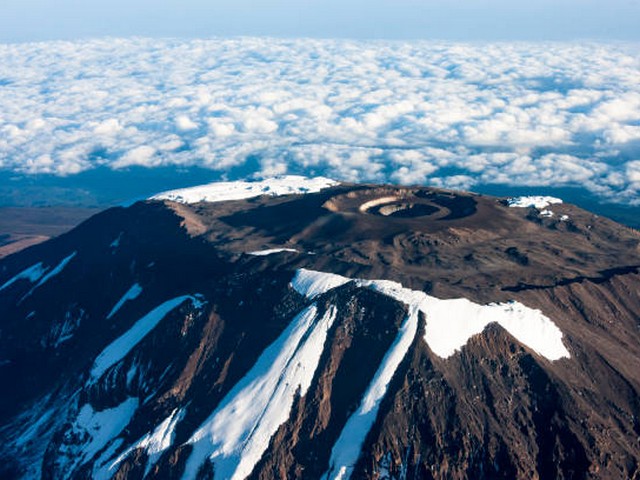Essential Kilimanjaro Photography Gear Checklist
Capture the Roof of Africa: Your Ultimate Guide to Kilimanjaro Photography Essentials
Standing tall and majestic, Mount Kilimanjaro is not just a mountain; it’s an emblem of daring dreams and celestial beauty. At Kilimanjaro Centre for Trekking and Ecotourism (KCTE), we know that every trekker dreams of capturing the surreal vistas, the sprawling landscapes below, and the triumphant moment at the summit. Whether you’re a seasoned photographer or a passionate newbie, having the right photography gear can make all the difference. This blog post offers you an essential Kilimanjaro photography gear checklist, ensuring you capture the grandeur of your climb with pristine clarity.
Why the Right Photography Gear Matters on Kilimanjaro
Kilimanjaro’s diverse climates and stunning ecological variety present unique challenges and opportunities for photographers. From rainforest moisture to alpine desert sun, the right gear will help you overcome the elements and capture stunning images that do justice to your experience. Remember, the journey to Uhuru Peak is fleeting, but the memories, if captured correctly, can last a lifetime.
The Essential Kilimanjaro Photography Gear Checklist
1. Camera Body: Choose Your Companion Wisely
- DSLR vs. Mirrorless: DSLRs are known for their reliability and battery longevity, while mirrorless cameras offer lighter weight and compact size. Consider Nikon D850 or Sony Alpha a7R IV for their robust build and excellent image quality.
- Backup Camera: Always have a backup. Anything can happen on the mountain, and gear failure shouldn’t cost you your memories.
2. Lenses: The Eyes of Your Camera
- Wide-Angle Lens: Essential for capturing expansive landscapes and the vastness of the mountain. Something like a Canon 16-35mm f/2.8 or a Sony 16-35mm f/4 would be perfect.
- Telephoto Lens: For wildlife at a distance and detailed crater shots. A 70-200mm lens generally offers a versatile range.
- Prime Lens: Consider a fast prime lens (like a 50mm f/1.8) for sharp, beautiful portraits of fellow climbers and local flora.
3. Tripod: Your Stability in the Winds
- Lightweight and Durable: Carbon fiber tripods offer the best balance of stability and portability. Brands like Manfrotto or Gitzo have models specifically designed for travel.
4. Filters: Control Light and Enhance Images
- Polarizing Filter: Reduce glare and enhance the blues of the sky and the greens of the jungle.
- Neutral Density Filters: For those captivating long-exposure shots of waterfalls or clouds moving over the summit.
5. Memory Cards and Backup Solutions
- High Capacity, High Speed: Cards like SanDisk Extreme Pro can keep up with high-resolution shooting in burst mode.
- Multiple Cards: Don’t put all your digital eggs in one basket. Spread your shots across several cards.
- Portable Hard Drive or SSD: Backup your cards each night to a rugged portable drive.
6. Power Solutions: Keep the Cameras Rolling
- Extra Batteries: Cold weather drains battery life. Bring more than you think you need.
- Solar Charger: Harness the power of the sun to keep your gear charged, especially on longer treks.
7. Camera Bag: Protection and Accessibility
- Weather-Resistant with Easy Access: Look for a bag like the Lowepro Whistler that can stand up to tough conditions and lets you quickly reach your gear.
8. Miscellaneous Must-Haves
- Lens Cleaning Kit: Dust and fingerprints can ruin a great shot. Keep your lenses clean.
- Rain Covers: Sudden downpours are common. Protect your equipment.
- Gloves for Cold Weather: You’ll need them for those chilly early morning shoots, and make sure they are thin enough to handle camera controls.
Capturing the Summit: Photography Tips for Kilimanjaro
- Early Morning Light: The golden hours of sunrise provide incredible lighting. Wake up early and capture the magic.
- Use People for Scale: Include your trekking companions in shots to give scale to the vast landscapes.
- Stay Steady: High altitudes can be taxing. Take a moment to steady your breath and hands before taking a shot.
Before You Go: Preparing for Your Kilimanjaro Adventure
Before embarking on your journey to Kilimanjaro, make sure you are well prepared. Booking your climb with a reputable and experienced operator like Kilimanjaro Centre for Trekking and Ecotourism (KCTE) not only ensures safety and comfort but also provides you with insights and access to the best photography spots on the mountain. We understand the unique needs of photographers and can customize your trek to help you capture those once-in-a-lifetime shots.
FAQ: Gear Up for Kilimanjaro
Q: Can I rent photography gear in Tanzania?
A: Yes, there are rental options available, but it’s advisable to bring your own gear to ensure you are comfortable with it before your climb.
Q: What’s the best time of year for photography on Kilimanjaro?
A: The best visibility and weather conditions are typically during the dry seasons, from June to October and from December to March.
Q: How do I protect my camera from the cold on summit night?
A: Keep your batteries close to your body heat and insulate your camera in your bag until ready to use.
Q: Are drones allowed on Kilimanjaro?
A: No, drones are currently not allowed in Kilimanjaro National Park without special permits, which are rarely granted for tourists.
Capture Your Kilimanjaro Experience with KCTE
Embarking on a Kilimanjaro climb is an adventure of a lifetime, and capturing it through your lens is an opportunity that every photographer dreams of. At Kilimanjaro Centre for Trekking and Ecotourism (KCTE), we’re committed to making your climb successful and memorable. Contact us today to book your trek, and start preparing your photography gear for an epic journey to the Roof of Africa. Remember, some stories are best told through pictures—let’s make yours truly spectacular!




